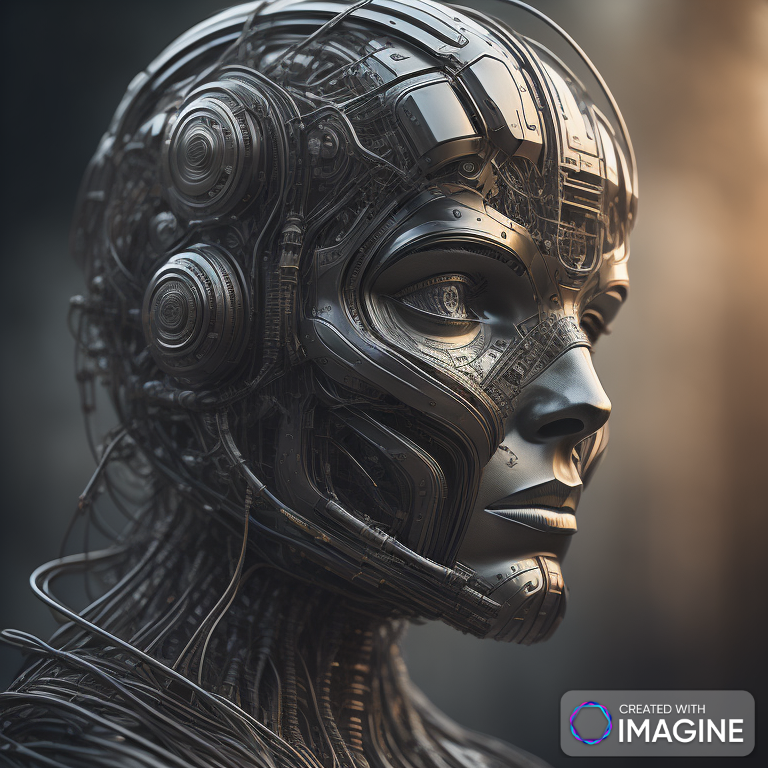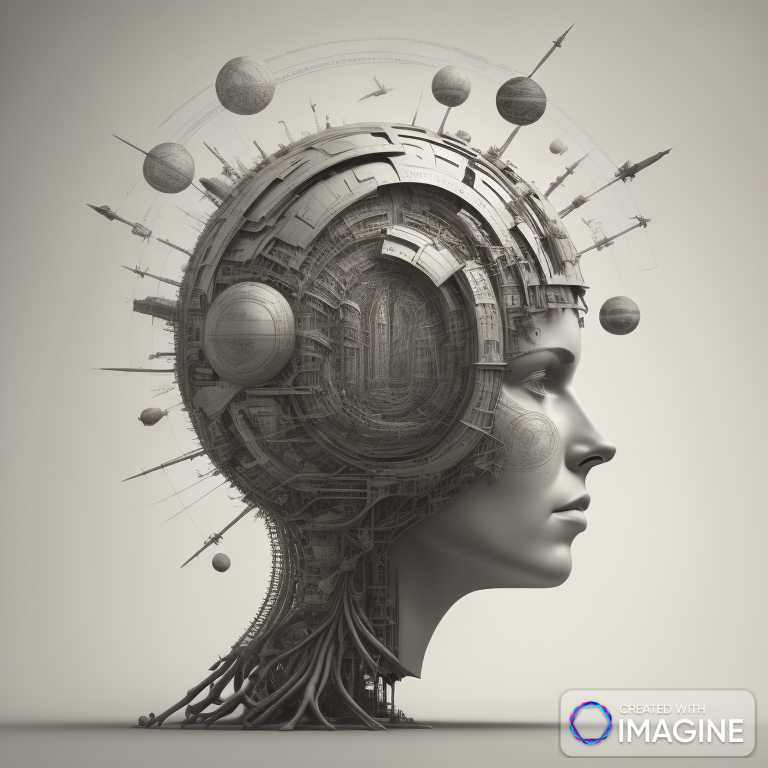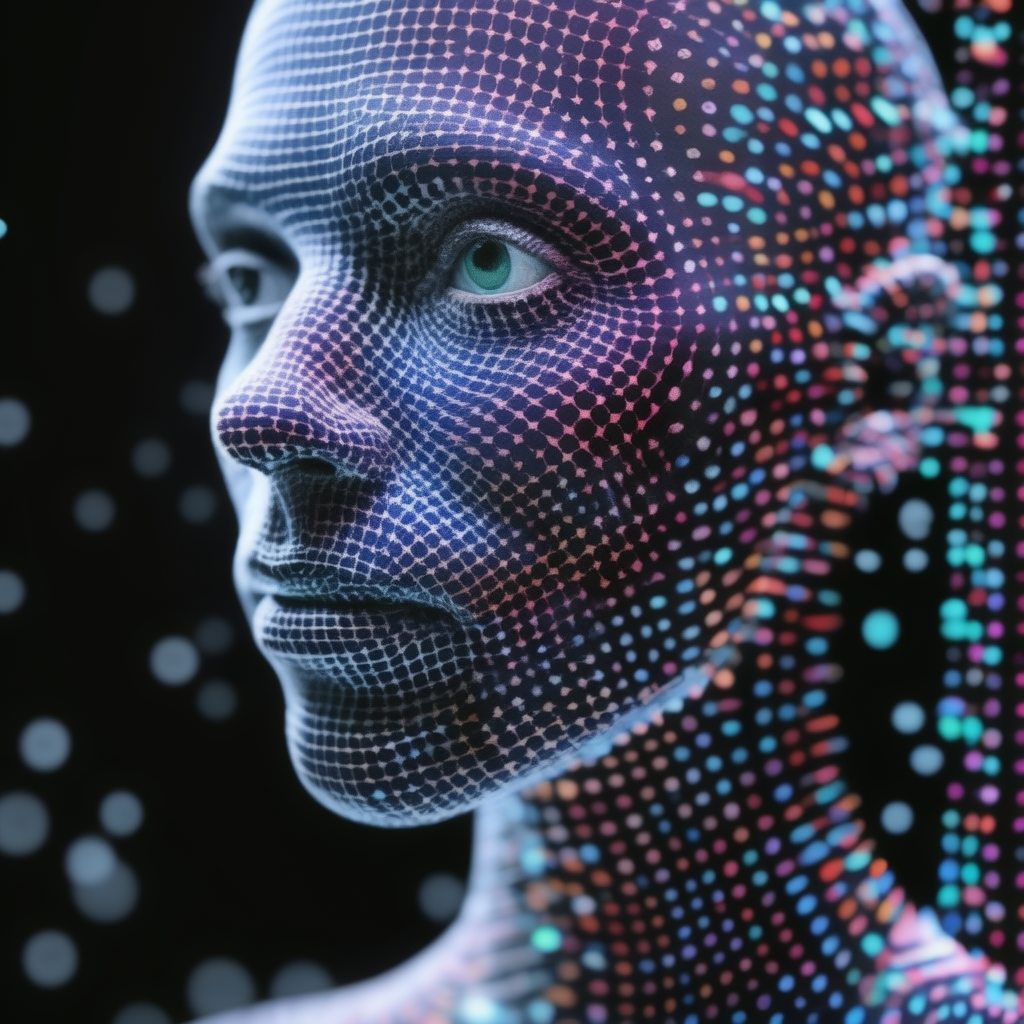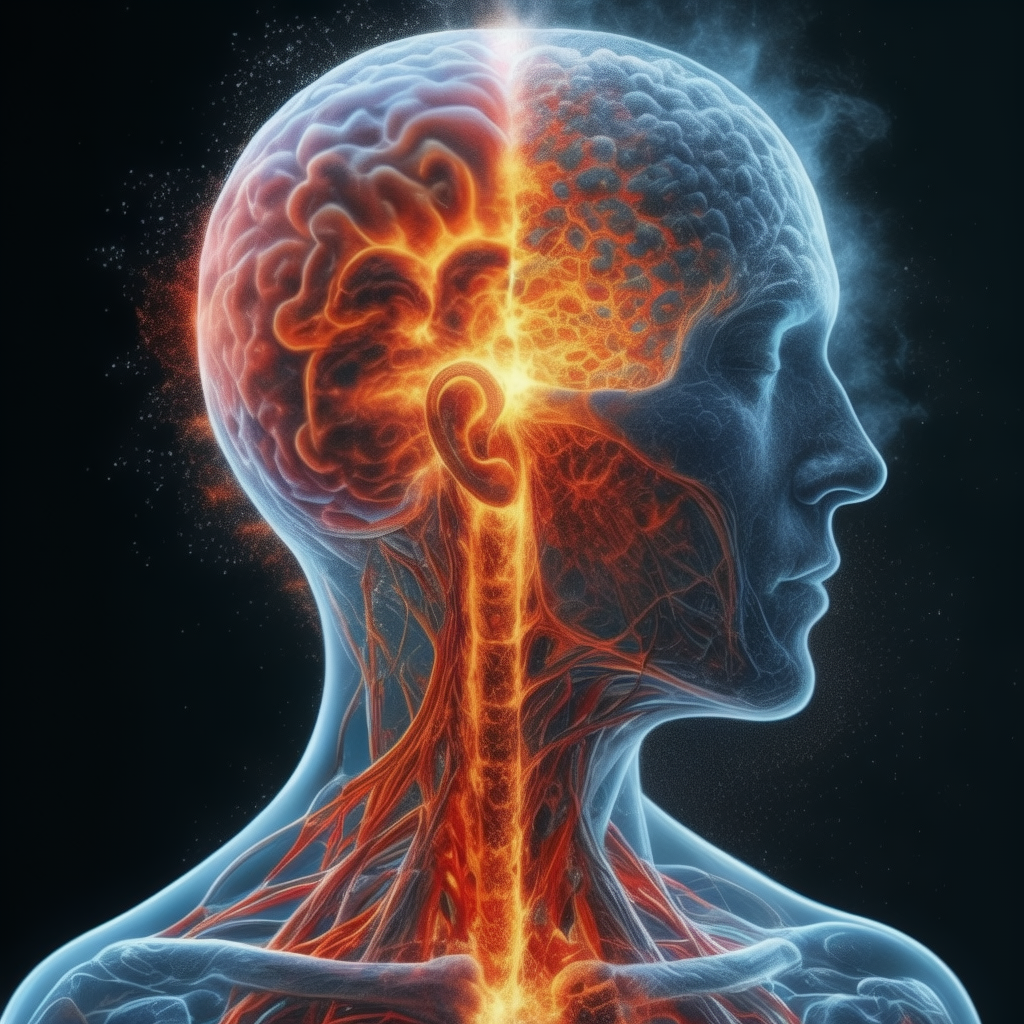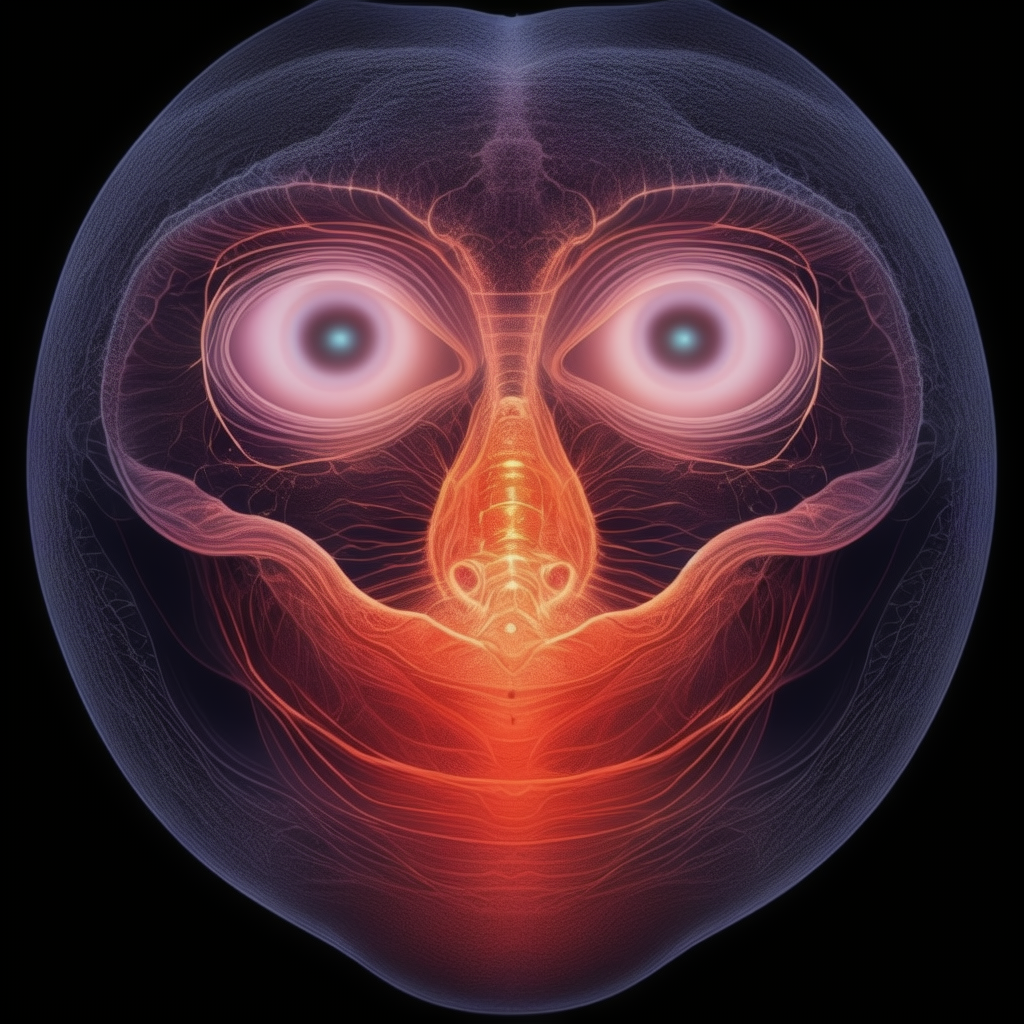Artificial Intelligence (AI) has long been fascinated by the intricacies of the human brain. Drawing inspiration from neurophysiological evidence, researchers delve into the complex world of computational models to simulate and understand cognitive processes. This blog post explores the intersection of neurophysiology and AI, unraveling the fascinating journey from brain-inspired insights to the development of powerful computational models.
1. Bridging the Gap Between Biology and AI: The journey begins with an exploration of the fundamental link between neurophysiology and AI. Understanding the biological underpinnings of cognitive processes provides a blueprint for creating more sophisticated and nuanced artificial intelligence systems.
2. Neurons as Information Processors: Delving into neurophysiological evidence, we examine the role of neurons as the basic information processors in the brain. The intricate interplay of electrical and chemical signals within neural networks serves as a foundation for developing computational models that mimic these processes.
3. Synaptic Plasticity: The Key to Learning: Neuroscience reveals the remarkable concept of synaptic plasticity—the ability of synapses to strengthen or weaken over time. This biological phenomenon inspires the development of learning algorithms in AI. Computational models incorporating synaptic plasticity aim to replicate the brain’s adaptability and learning capabilities.
4. Neural Networks in AI: A Biological Analogy: The emergence of neural networks in AI mirrors the interconnectedness of neurons in the brain. From perceptrons to deep neural networks, these models leverage neurophysiological principles to process information, recognize patterns, and make decisions.
5. Role of Neurotransmitters in AI Models: Examining the role of neurotransmitters in neurophysiology offers insights into the development of neuromodulation techniques in AI. Mimicking the impact of neurotransmitters on neural network dynamics, computational models seek to enhance adaptability and optimize performance.
6. Brain-Computer Interfaces: A Convergence Point: Advancements in neurophysiological research contribute to the development of Brain-Computer Interfaces (BCIs). This convergence of biology and AI enables direct communication between the human brain and computational systems, opening new avenues for enhancing human-machine interactions.
7. Challenges and Ethical Considerations: As we explore the synergy between neurophysiological evidence and AI models, it’s crucial to address challenges and ethical considerations. Issues such as privacy, consent, and the potential impact of AI on human cognition warrant careful examination.
8. Future Prospects: Unraveling the Uncharted: Looking ahead, the blog post delves into the potential future prospects of this interdisciplinary field. From unlocking the mysteries of consciousness to developing neuro-inspired algorithms, the synergy between neurophysiology and AI holds promises that extend beyond our current understanding.
9. Cognitive Computing: Expanding Horizons: Neurophysiological evidence plays a pivotal role in shaping the landscape of cognitive computing. By understanding how the brain processes information, AI researchers aim to create systems that not only mimic human cognition but also exhibit reasoning, problem-solving, and decision-making capabilities.
10. Emergence of Spiking Neural Networks: A deeper dive into neurophysiology introduces the concept of spiking neural networks. Mimicking the way neurons communicate through spikes or action potentials, AI models, particularly in neuromorphic computing, strive to capture the temporal dynamics of neural information processing.
11. Memory Systems in AI: From Short-Term to Long-Term: Neurophysiological insights guide the development of memory systems in AI. Short-term and long-term memory mechanisms inspired by the brain’s hippocampus and cortex contribute to the creation of AI models capable of learning from and retaining information over time.
12. Parallel Processing: Harnessing the Brain’s Efficiency: The brain’s parallel processing capabilities, where multiple tasks are executed simultaneously, inspire AI architectures focused on parallelism. This approach enhances computational efficiency and accelerates tasks in fields such as image recognition and natural language processing.
13. Real-time Adaptability: A Neuro-Inspired Advantage: One of the key takeaways from neurophysiology is the brain’s real-time adaptability to diverse stimuli. AI models incorporating this feature can dynamically adjust their responses to changing environments, making them more resilient and versatile.
14. Neuromorphic Hardware: Beyond Traditional Architectures: Advancements in neurophysiological understanding lead to the design of neuromorphic hardware. Departing from traditional von Neumann architectures, neuromorphic chips aim to mirror the brain’s structure, fostering energy-efficient and brain-like computation.
15. Ethical Implications in AI Development: The blog post delves into the ethical considerations surrounding the integration of neurophysiological evidence into AI. Questions about the responsible use of AI, potential biases, and the ethical treatment of AI systems in alignment with human values become central to the discussion.
16. Human-Computer Collaboration: A Synergistic Approach: The synergy between neurophysiology and AI extends beyond replication to collaboration. Human-computer partnerships leverage AI’s analytical prowess and the human touch’s intuition, creating a symbiotic relationship that enhances overall problem-solving capabilities.
17. Neuromorphic Vision Systems: Redefining Perception: Exploring neurophysiological evidence related to vision provides insights into the development of neuromorphic vision systems. These AI models, inspired by the human visual system, excel in tasks such as object recognition, scene understanding, and image classification.
18. Interdisciplinary Research: Fostering Collaboration: Highlighting the importance of interdisciplinary collaboration, the blog post emphasizes the synergy between neuroscientists, biologists, and AI researchers. Cross-disciplinary efforts accelerate progress and contribute to a more holistic understanding of both the human brain and artificial intelligence.
19. Quantum Computing and Neural Networks: A Convergence: As quantum computing advances, its intersection with neural networks becomes an intriguing area. Quantum neural networks aim to leverage the principles of quantum mechanics to enhance computational power, offering new avenues for complex problem-solving.
20. Neuroethics: Navigating Ethical Dilemmas: Further exploring the ethical landscape, the blog post delves into neuroethics. As AI systems become more sophisticated and aligned with neurophysiological principles, ethical considerations must address issues such as cognitive enhancement, mind reading, and privacy concerns.
21. Explainable AI: Decoding the Black Box: Neurophysiological evidence encourages the pursuit of explainable AI, where the inner workings of AI models are transparent and interpretable. This approach fosters trust and accountability, essential elements as AI systems become integral to decision-making processes.
22. Brain-Computer Interfaces: Bridging Minds and Machines: The integration of neurophysiological insights into AI sparks advancements in brain-computer interfaces (BCIs). These interfaces establish direct communication between the human brain and machines, opening avenues for applications in healthcare, communication, and accessibility.
23. Emotional AI: Embracing Emotional Intelligence: Neurophysiological understanding guides the development of emotional AI, enabling machines to recognize and respond to human emotions. Emotional intelligence in AI enhances user interactions, making systems more attuned to the nuanced aspects of human communication.
24. Attention Mechanisms in AI: Mimicking Focus and Awareness: Inspired by how attention works in the brain, AI models incorporate attention mechanisms. These mechanisms enable the model to focus on specific parts of input data, enhancing performance in tasks such as image captioning and machine translation.
25. AI in Healthcare: Revolutionizing Diagnosis and Treatment: Neurophysiological principles contribute significantly to the evolution of AI in healthcare. From medical imaging interpretation to personalized treatment recommendations, AI systems grounded in neurobiology aim to improve patient outcomes and streamline healthcare processes.
26. Brain-inspired Learning: Beyond Supervised Learning: Neurophysiology inspires novel learning paradigms in AI. Brain-inspired learning goes beyond traditional supervised learning, exploring unsupervised and reinforcement learning models that align with the brain’s capacity for continuous adaptation and learning.
27. Cognitive Bias Mitigation: Navigating Human-like Decision Making: Understanding cognitive biases inherent in human decision-making guides AI developers in creating models that mitigate biases. Neurophysiological insights inform strategies to ensure fair and unbiased AI decision-making across diverse user groups.
28. Brain Waves and Neurofeedback in AI: Enhancing Performance: The incorporation of brain wave data and neurofeedback techniques enhances AI performance. Neurofeedback-driven AI systems adapt in real-time based on user responses, optimizing user experience and personalization.
29. Neuro-Robotics: Integrating AI with Physical Systems: In the realm of neuro-robotics, AI models informed by neurophysiology seamlessly integrate with physical robotic systems. This convergence leads to the development of robots capable of more natural and adaptive interactions in various environments.
30. Neuromarketing: Decoding Consumer Behavior: The intersection of neurophysiology and AI extends to neuromarketing, where AI models analyze neurobiological responses to marketing stimuli. Understanding consumer behavior at a neurological level informs targeted and effective marketing strategies.
31. AI-driven Drug Discovery: Accelerating Research: Neurophysiological insights contribute to AI-driven drug discovery processes. AI models, inspired by the brain’s understanding of molecular interactions, expedite the identification of potential drug candidates, ushering in a new era of precision medicine.
32. Personalized Learning Platforms: Tailoring Education: In education, AI platforms incorporating neurophysiological principles offer personalized learning experiences. These platforms adapt to individual learning styles, strengths, and weaknesses, optimizing educational outcomes for diverse learners.
33. Brain-Emulated Computing: Mimicking Neural Networks: Advancements in brain-emulated computing involve creating AI architectures that closely mimic neural networks. This approach aims to capture the nuanced and parallel processing capabilities of the brain, pushing the boundaries of computational efficiency.
34. Neural Plasticity in AI: Adapting to Change: The concept of neural plasticity, the brain’s ability to reorganize itself in response to experience, inspires AI models with adaptive capabilities. AI systems exhibiting neural plasticity can dynamically adjust to new information and evolving tasks.
35. Brain-inspired Creativity: Unleashing Innovative Potential: Neurophysiological evidence fuels the exploration of AI-driven creativity. Brain-inspired models seek to replicate the creative processes of the human mind, generating novel ideas, designs, and solutions across various domains.
36. Collaborative AI: Humans and Machines in Harmony: The integration of neurophysiological insights fosters collaborative AI systems where humans and machines work harmoniously. This collaborative approach capitalizes on the strengths of both, leading to enhanced problem-solving and creativity.
37. AI-driven Assistive Technologies: Empowering Accessibility: Neuro-inspired AI plays a pivotal role in the development of assistive technologies. These technologies empower individuals with disabilities by providing adaptive solutions, from brain-controlled prosthetics to communication aids.
38. AI in Neurological Disorder Diagnosis: Early Detection: AI applications informed by neurophysiology contribute to early detection and diagnosis of neurological disorders. These tools analyze patterns in neurological data, aiding healthcare professionals in timely interventions and treatment planning.
39. Ethics of Mind Reading Technologies: Navigating Boundaries: As AI advancements approach mind-reading capabilities, ethical considerations become paramount. The blog post explores the ethical implications of technologies that decode brain activity, delving into privacy, consent, and societal impact.
40. Beyond Artificial General Intelligence (AGI): Future Trajectories: The exploration concludes by contemplating the future trajectories of AI beyond Artificial General Intelligence (AGI). Neurophysiological insights provide a roadmap for the ongoing evolution of AI, raising questions about the ethical, societal, and existential dimensions of AI advancement.
In this comprehensive exploration, the blog post navigates the intricate interplay between neurophysiological evidence and computational models in artificial intelligence. Each point unfolds a facet of this dynamic relationship, offering readers a nuanced understanding of the profound impact neurobiology has on shaping the future of AI.

